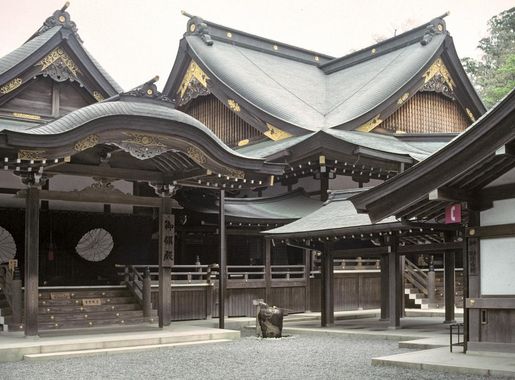
Ise Shima: The Heart of Spiritual and Natural Beauty in Japan
Discover Ise Shima: Japan's Spiritual Heartland and Coastal Gem with Stunning Landscapes, Rich Culture, and Delicious Seafood.
Located on the Shima Peninsula in Mie Prefecture, Ise Shima is a mesmerizing blend of natural beauty, spiritual heritage, and vibrant culture. It is widely known for the Ise Grand Shrine, one of Japan's most important and revered Shinto shrines. The shrine is dedicated to the sun goddess Amaterasu and attracts millions of pilgrims and tourists every year. The serene surroundings and the sacred atmosphere make it a must-visit. Apart from its spiritual significance, Ise Shima is also famous for its picturesque landscapes and coastal beauty. The Ago Bay, often referred to as the 'Bay of Pearls,' is dotted with numerous islands and is a hub for pearl cultivation. The bay offers stunning views and is perfect for boat tours. The region is also known for its delicious seafood, particularly the Ise lobster and abalone, which are local delicacies. For those interested in culture and history, Ise Shima offers a glimpse into traditional Japanese life. The Mikimoto Pearl Island is home to the world’s first cultured pearl farm and a museum that showcases the history of pearl cultivation. The area also hosts various festivals throughout the year, providing an opportunity to experience local traditions and customs. With its combination of spiritual depth, natural beauty, and rich culture, Ise Shima is a destination that offers something for every traveler.
Local tips in Ise Shima
- Visit Ise Grand Shrine early in the morning to avoid crowds and enjoy a peaceful experience.
- Take a boat tour of Ago Bay for the best views of the 'Bay of Pearls' and its many islands.
- Try the local seafood, especially Ise lobster and abalone, at one of the coastal restaurants.
- Explore Mikimoto Pearl Island to learn about the history of pearl cultivation and see live demonstrations.
- Check the local festival calendar to experience traditional Japanese celebrations and cultural events.
Ise Shima: The Heart of Spiritual and Natural Beauty in Japan
Located on the Shima Peninsula in Mie Prefecture, Ise Shima is a mesmerizing blend of natural beauty, spiritual heritage, and vibrant culture. It is widely known for the Ise Grand Shrine, one of Japan's most important and revered Shinto shrines. The shrine is dedicated to the sun goddess Amaterasu and attracts millions of pilgrims and tourists every year. The serene surroundings and the sacred atmosphere make it a must-visit. Apart from its spiritual significance, Ise Shima is also famous for its picturesque landscapes and coastal beauty. The Ago Bay, often referred to as the 'Bay of Pearls,' is dotted with numerous islands and is a hub for pearl cultivation. The bay offers stunning views and is perfect for boat tours. The region is also known for its delicious seafood, particularly the Ise lobster and abalone, which are local delicacies. For those interested in culture and history, Ise Shima offers a glimpse into traditional Japanese life. The Mikimoto Pearl Island is home to the world’s first cultured pearl farm and a museum that showcases the history of pearl cultivation. The area also hosts various festivals throughout the year, providing an opportunity to experience local traditions and customs. With its combination of spiritual depth, natural beauty, and rich culture, Ise Shima is a destination that offers something for every traveler.
When is the best time to go to Ise Shima?
Iconic landmarks you can’t miss
Okage Yokocho
Explore Okage Yokocho: A vibrant tourist attraction in Ise, Mie, showcasing traditional culture, delicious local cuisine, and charming architecture.
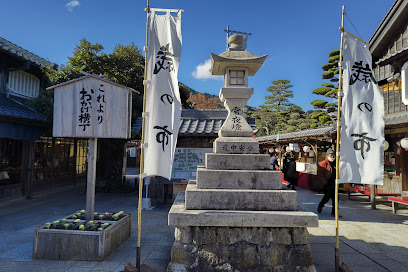
Kotai Jingu (Ise Jingu Naiku, Inner Sanctuary)
Experience the spiritual heart of Japan at Kotai Jingu, a stunning Shinto shrine dedicated to the sun goddess Amaterasu, amidst serene natural beauty.

Toyouke Daijingu (Ise Jingu Geku, Outer Sanctuary)
Experience spiritual serenity at Toyouke Daijingu, a revered Shinto shrine in Ise, Japan, offering a glimpse into the nation's rich cultural heritage.
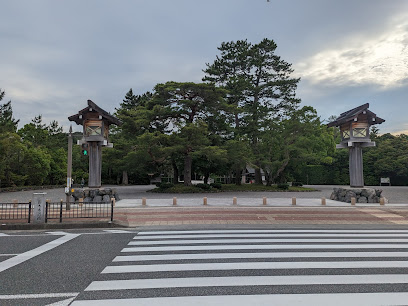
Shima Spain Village
Experience the vibrant fusion of Spanish culture and thrilling amusement at Shima Spain Village, a captivating theme park in Japan.
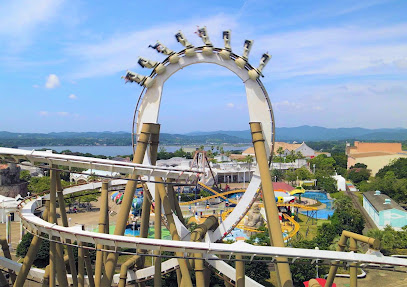
Yokoyama Observatory Deck
Discover breathtaking views at Yokoyama Observatory Deck, a stunning observation point showcasing the beauty of Ise-Shima's coastline and lush landscapes.
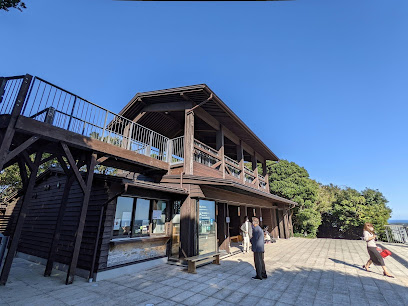
Asama Mountain View Point
Experience breathtaking views of Mount Asama and the scenic Ise region at the Asama Mountain View Point, a must-visit observation deck for nature enthusiasts.

Izawanomiya
Explore the sacred beauty of Izawanomiya, a Shinto shrine in Shima, where spirituality meets nature in a tranquil setting.

Daiozaki Lighthouse
Explore the stunning landscapes and rich history at Daiozaki Lighthouse, a must-visit scenic spot in Mie Prefecture, Japan.
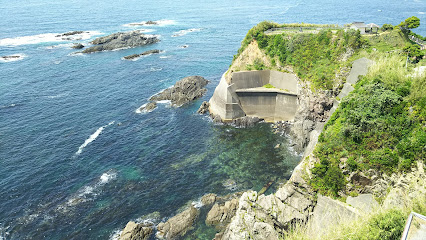
Meoto Iwa (Wedded Rocks)
Discover the spiritual beauty of Meoto Iwa, the Wedded Rocks of Ise, where nature and tradition intertwine in a breathtaking coastal landscape.
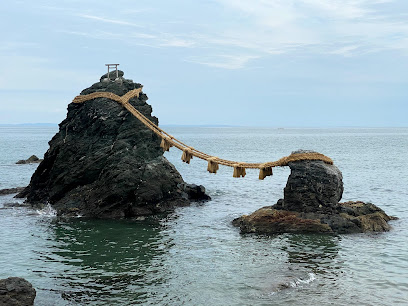
Asama-dake Kongosho-ji Temple
Explore the tranquil Asama-dake Kongosho-ji Temple, a stunning Buddhist sanctuary nestled in the serene landscapes of Ise, Japan.
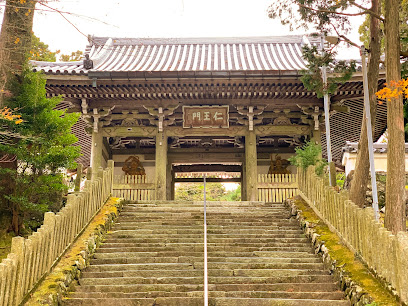
Sengukan Museum
Explore the captivating local history and culture at Sengukan Museum in Ise, Mie Prefecture, a must-visit for history enthusiasts and travelers alike.
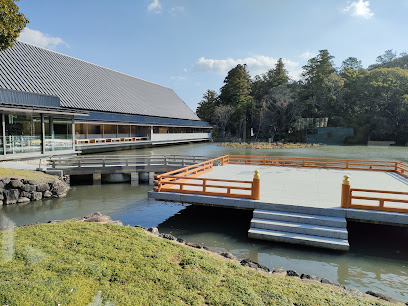
Ise Meotoiwa Shopping Plaza
Discover local culture and cuisine at the Ise Meotoiwa Shopping Plaza, a vibrant hub of shopping and dining nestled in scenic Ise, Japan.
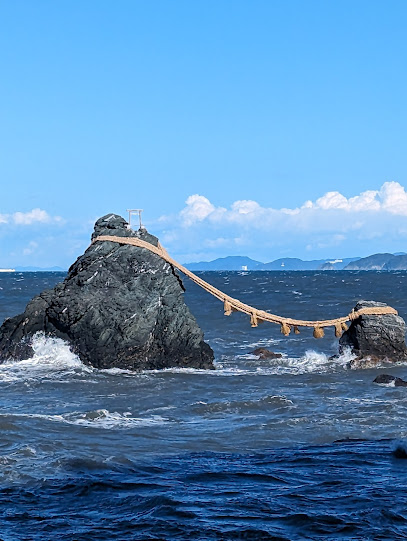
HINJITSUKAN
Explore the luxurious traditional charm and cultural heritage of Hinjitsukan, a must-see tourist attraction in Ise, Japan.
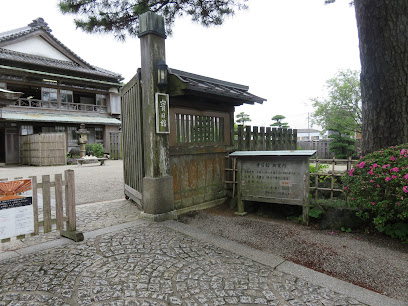
Ise-Shima National Park
Explore the breathtaking landscapes and rich biodiversity of Ise-Shima National Park in Japan's Mie region, a must-visit for nature enthusiasts and adventurers.
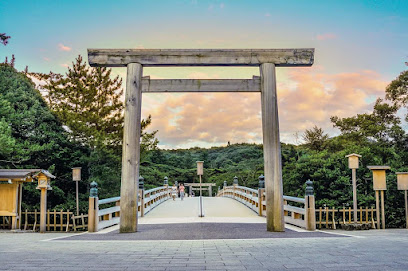
Omu Iwa
Discover the serene beauty of Omu Iwa in Shima, Japan, where stunning coastal views and rich culture create an unforgettable scenic experience.
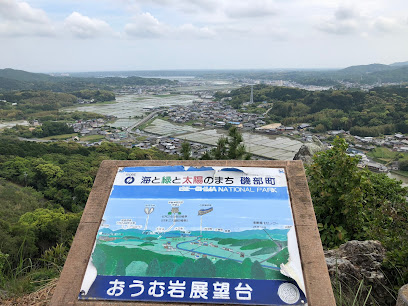
Unmissable attractions to see
Kotai Jingu (Ise Jingu Naiku, Inner Sanctuary)
Explore the spiritual heart of Japan at Kotai Jingu, a breathtaking Shinto shrine that embodies tradition, beauty, and tranquility.

Futamiokitama Shrine
Explore the tranquility and spiritual essence of Futamiokitama Shrine, a captivating destination in the heart of Ise, Japan, renowned for its breathtaking coastal views.

Shima Spain Village
Discover Shima Spain Village, where thrilling rides, Spanish culture, and delicious cuisine come together in a unique Japanese theme park experience.

Yokoyama Observatory Deck
Experience stunning panoramic views of Isi Bay at Yokoyama Observatory Deck, a must-visit tourist attraction in Shima, Mie, Japan.

Asama Mountain View Point
Experience the breathtaking beauty of Ise Bay from Asama Mountain View Point, a prime observation deck for stunning panoramic views.
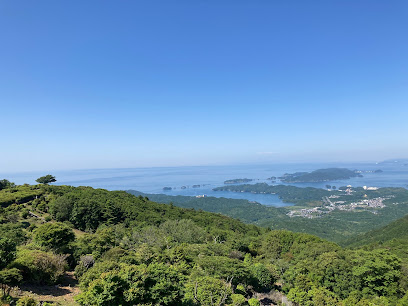
Izawanomiya
Experience the tranquil beauty of Izawanomiya, a serene Shinto shrine in Shima, Mie, where nature meets spirituality in perfect harmony.
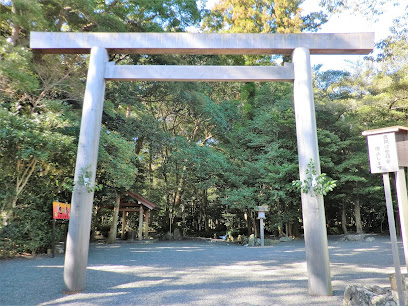
Daiozaki Lighthouse
Explore Daiozaki Lighthouse, where breathtaking ocean views meet rich maritime history in the scenic beauty of Shima, Japan.
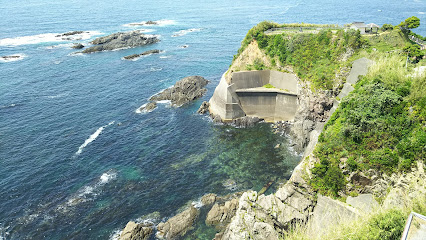
Ujibashi Bridge
Experience the serene beauty and cultural significance of Ujibashi Bridge, the gateway to the sacred Ise Jingu Shrine in Japan.
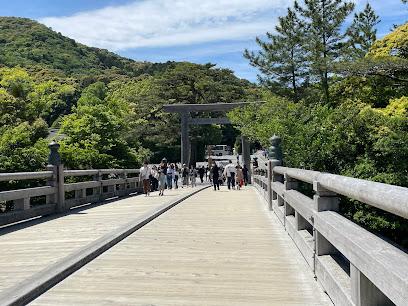
Sengukan Museum
Explore the captivating history of Ise at Sengukan Museum, where local culture and heritage come alive through engaging exhibits and artifacts.

Kashikojima Espana Cruise
Experience the breathtaking beauty of Mie Prefecture with the Kashikojima Espana Cruise, a scenic journey through Japan's stunning coastal landscapes.
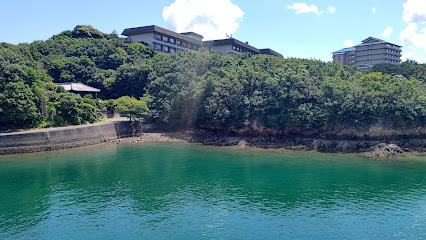
Kazahinomi-no-Miya Shrine
Discover the tranquility and spiritual heritage of Kazahinomi-no-Miya Shrine, a must-visit Shinto shrine in Ise, Mie, Japan.
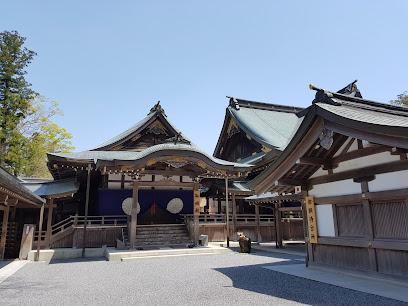
Anorisaki Lighthouse
Discover the stunning views and historic charm of Anorisaki Lighthouse, a must-visit attraction on the beautiful Shima coast in Japan.
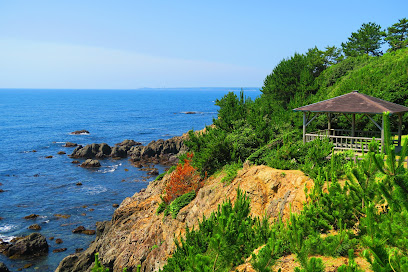
HINJITSUKAN
Discover the serene beauty and spiritual heritage of Hinjitsukan in Ise, Japan, a captivating tourist attraction beckoning travelers to explore.
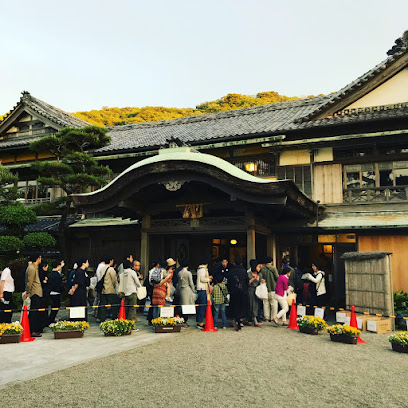
Ise Jingu Geku-sando
Explore the serene Geku-sando pathway leading to Ise Grand Shrine, a cultural treasure nestled in the heart of Mie Prefecture, Japan.
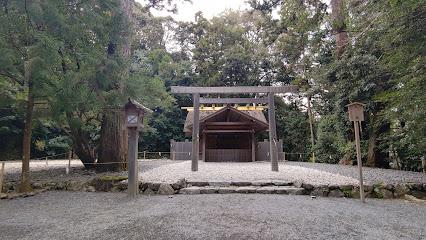
Shitennō-ji
Explore Shitennō-ji, a serene Buddhist temple in Tsu, Mie, rich in history and spiritual significance, perfect for reflection and cultural immersion.

Essential places to dine
Shima Mediterranean Village
Experience the charm of Shima Mediterranean Village with its stunning coastal views, exquisite dining options, and rich cultural experiences.

Toufuya
Discover the exquisite flavors of traditional Japanese cuisine at Toufuya in Ise, where tofu takes center stage in every delightful dish.
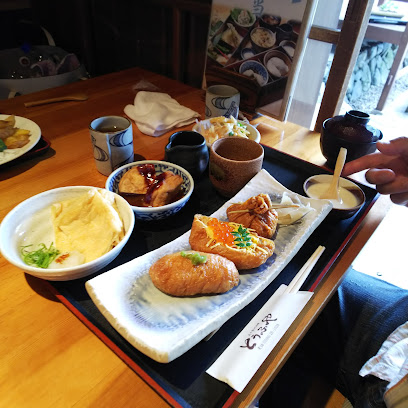
いかだ荘 山上
Experience exquisite seafood dining at Ikadasou in Shima – where tradition meets taste amid breathtaking coastal views.
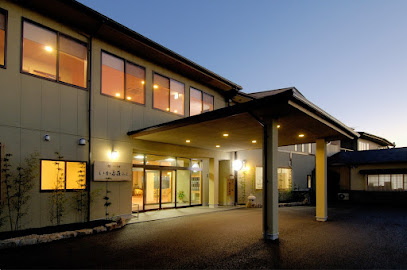
Ise Meotoiwa Shopping Plaza
Experience local culture at Ise Meotoiwa Shopping Plaza: a perfect blend of shopping and dining in scenic Ise.
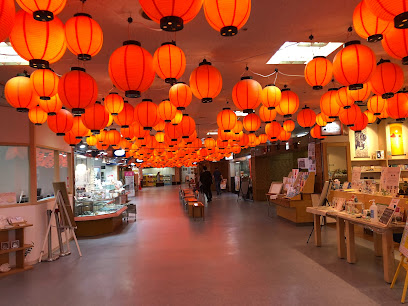
Ise Kadoya Beer
Experience the best of Japanese craft beer at Ise Kadoya Beer in the heart of Ise - where tradition meets taste.
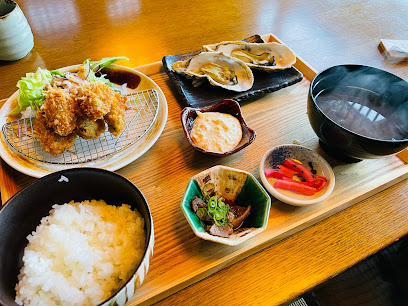
Matoyakaki Terrace
Experience fresh oysters and delightful seafood at Matoyakaki Terrace in Shima, where stunning ocean views meet culinary excellence.
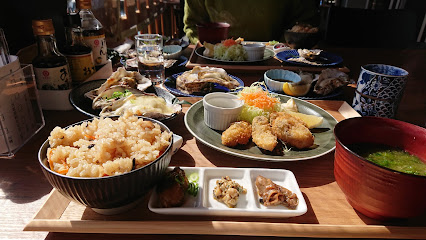
Yashiro
Discover Yashiro: A premier seafood restaurant in Shima offering fresh local delicacies and authentic Japanese dining experiences.
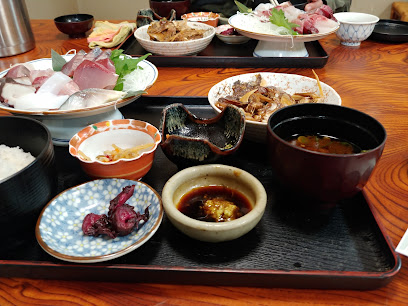
La Mer the Classic
Discover exquisite French dining at La Mer the Classic in Shima, where culinary artistry meets stunning coastal views.

Ama Hut Satoumian
Experience authentic Japanese seafood at Ama Hut Satoumian in Shima – where freshness meets tradition on your plate.

Restaurant La Mer
Experience exquisite French cuisine at Restaurant La Mer in Shima – where elegance meets exceptional flavors by the sea.
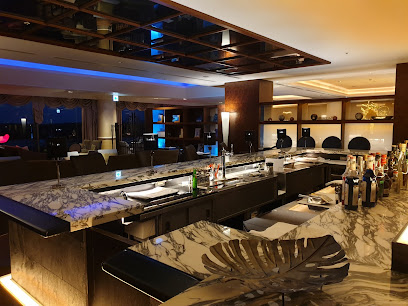
Auberge Yusura
Discover tranquility and authentic Kyoto cuisine at Auberge Yusura, your serene retreat in Ise.

Miyagino
Experience authentic kaiseki cuisine at Miyagino in Shima - a culinary journey through Japan's rich flavors awaits you.
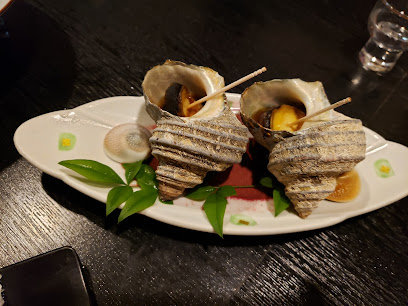
Satonaka Sushi
Experience authentic Japanese cuisine at Satonaka Sushi in Shima - where tradition meets freshness in every bite.
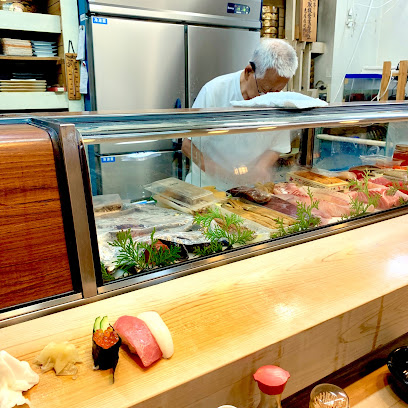
Sushi Yutaka Zen
Experience authentic sushi at Sushi Yutaka Zen in Shima, where tradition meets exquisite taste in every bite.
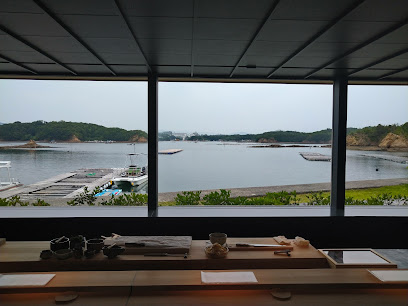
アマネムダイニング/アマネム
Experience exquisite dining at Amanemu, where seasonal ingredients meet breathtaking views in Shima's serene landscape.
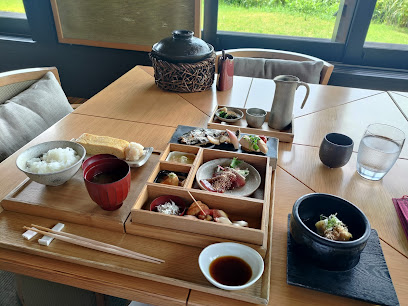
Markets, malls and hidden boutiques
Okage Yokocho
Experience the rich cultural heritage and culinary delights at Okage Yokocho, a must-visit destination in Ise, Japan.
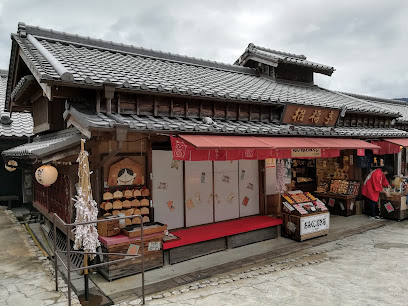
Toba Tembodai Observatory (Ama-no-Terrace)
Discover breathtaking views of Toba Bay and Ise Shima National Park at Toba Tembodai Observatory, a highlight of Japan's scenic attractions.

Asama Mountain View Point
Experience the breathtaking beauty of Asama Mountain View Point, where stunning vistas meet tranquil nature in Ise, Japan.
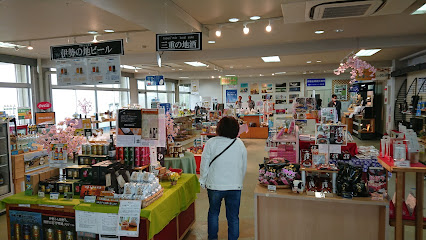
Shima Mediterranean Village
Immerse yourself in the Mediterranean charm at Shima Mediterranean Village, where culinary delights and coastal adventures await.

Grand Mercure
Discover a luxurious escape at Grand Mercure Shima, where comfort meets elegance amidst the stunning landscapes of Mie, Japan.

XIV Toba Villa
Discover the serene luxury of XIV Toba Villa, where stunning views and exceptional service create the perfect retreat in Toba, Japan.

Ninja Kingdom Ise
Experience the thrill and culture of ninjas at Ninja Kingdom Ise, a top theme park in Japan blending entertainment with rich historical insights.
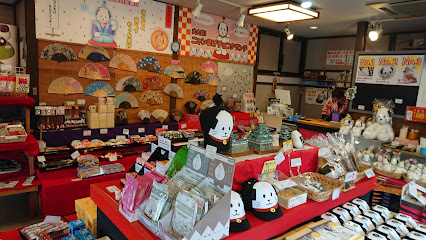
Ise Meotoiwa Shopping Plaza
Explore Ise Meotoiwa Shopping Plaza: A fusion of shopping, dining, and breathtaking views near the iconic Meoto Iwa rocks.
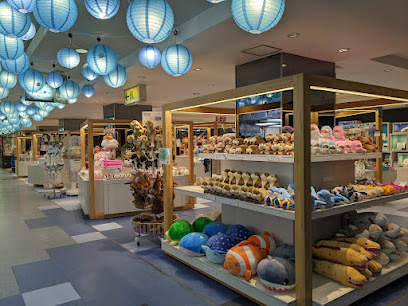
Ise-Shima National Park
Experience the breathtaking beauty and cultural richness of Ise-Shima National Park, a natural marvel in Mie Prefecture, Japan.
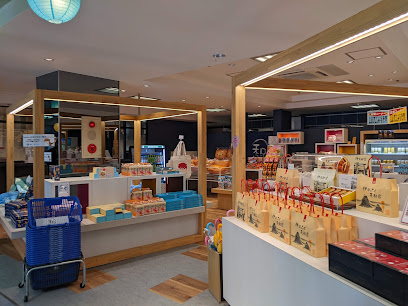
Senokuniya
Discover the essence of Japan at Senokuniya, where exquisite souvenirs and authentic Japanese cuisine await in Ise.
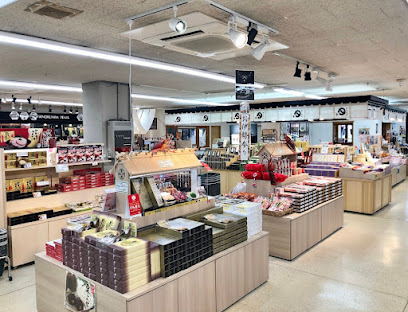
Toba Station
Discover Toba Station, your gateway to Japan's breathtaking coastal beauty and cultural treasures in Mie Prefecture.
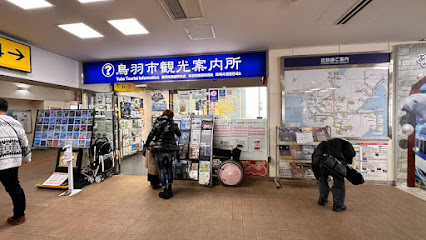
Ama no Shima
Discover the tranquility of Ama no Shima, a traditional Japanese inn in Toba, where serene landscapes meet exquisite local cuisine.
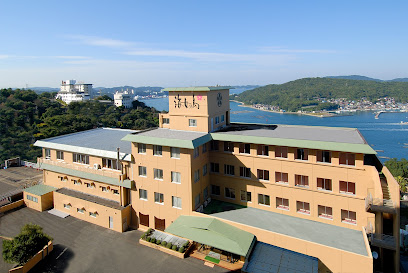
Pearl Falco Ise Gallery
Discover the exquisite craftsmanship of pearls at Pearl Falco Ise Gallery, a must-visit destination in Ise for unique jewelry and cultural experience.
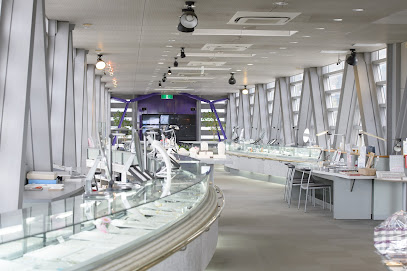
Ise-Shima Skyline
Experience the stunning Ise-Shima Skyline, where breathtaking views of Ise Bay and lush nature await every traveler.

Hamaco Pearl Toba
Hamaco Pearl Toba: A gem of elegance nestled in Toba, Japan, where exquisite pearl jewelry meets exceptional craftsmanship.
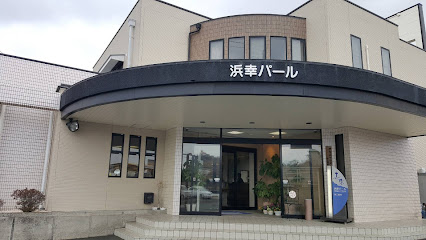
Essential bars & hidden hideouts
Kashikojima Hojoen
Discover the serene beauty and authentic Japanese hospitality at Kashikojima Hojoen, a traditional inn in stunning Shima, Mie.

Grand Mercure
Discover luxury and tranquility at Grand Mercure Shima, your gateway to the natural wonders and rich culture of Japan's Mie Prefecture.

Toba Seaside Hotel
Experience unparalleled comfort and breathtaking coastal views at Toba Seaside Hotel, your gateway to the beauty of Mie Prefecture.

Ninja Kingdom Ise
Experience the thrilling world of ninjas at Ninja Kingdom Ise, a unique theme park in Japan that offers adventure, culture, and excitement for all ages.
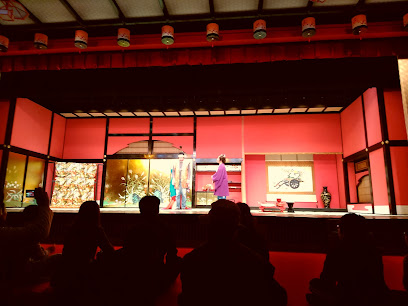
L'Escamoteur
Explore L'Escamoteur, an enchanting cocktail bar in Kyoto that offers a unique atmosphere and expertly crafted drinks for an unforgettable night out.
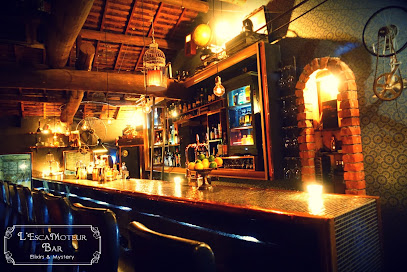
Yuga Iseshima
Discover the serene beauty of Yuga Iseshima, a traditional Japanese inn offering outdoor baths and an authentic cultural experience in Shima.

Quintessa Hotel Iseshima
Discover tranquility and comfort at Quintessa Hotel Iseshima, a serene coastal retreat in the heart of Japan's Shima region.
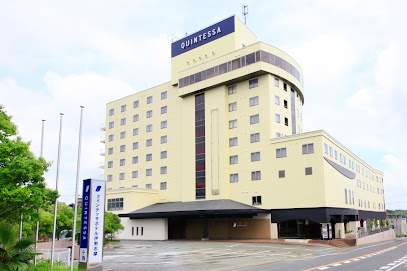
Ise-Shima Everglades
Experience the serene beauty of nature at Ise-Shima Everglades, a premier campground in Mie Prefecture, Japan.

いかだ荘 山上
Discover traditional Japanese hospitality and the finest oysters at Ikadasou Mountain Inn, your serene getaway in Shima, Japan.
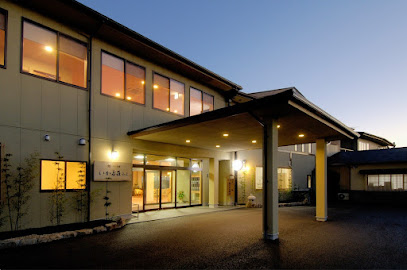
Ise Kadoya Beer
Experience the best of local craft beer at Ise Kadoya Beer, a brewpub in Ise, Mie, where quality meets tradition.

Amanemu
Experience the perfect blend of luxury and nature at Amanemu, a serene retreat in Shima-shi, Japan.

Ise-Shima National Park
Discover the captivating beauty of Ise-Shima National Park, where stunning coastlines meet rich cultural heritage in Mie Prefecture.
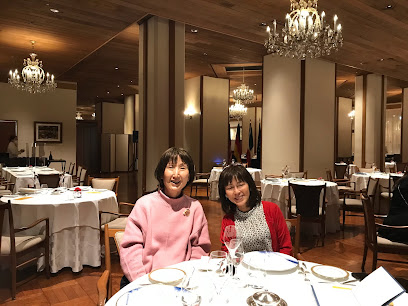
Matoyakaki Terrace
Experience the best of Shima's seafood at Matoyakaki Terrace, where fresh oysters and stunning views await every visitor.
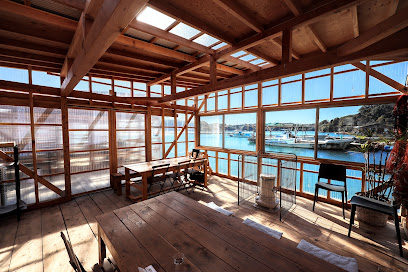
Hotel Sunperla Shima
Discover the serenity of coastal living at Hotel Sunperla Shima, where comfort meets breathtaking views in the heart of Japan's beautiful Mie Prefecture.

Yumotokan New Hamajima Hananokan Tsubaki
Experience the serenity of Yumotokan New Hamajima Hananokan Tsubaki, a traditional Japanese inn offering onsen relaxation and exquisite cuisine in Shima.

Local Phrases about Ise Shima
-
- Helloこんにちは
[Konnichiwa] - Goodbyeさようなら
[Sayonara] - Yesはい
[Hai] - Noいいえ
[Iie] - Please/You're welcomeどうぞ
[Douzo] - Thank youありがとうございます
[Arigatou gozaimasu] - Excuse me/Sorryすみません
[Sumimasen] - How are you?お元気ですか?
[Ogenki desu ka?] - Fine. And you?元気です。あなたは?
[Genki desu. Anata wa?] - Do you speak English?英語を話せますか?
[Eigo o hanasemasu ka?] - I don't understandわかりません
[Wakarimasen]
- Helloこんにちは
-
- I'd like to see the menu, pleaseメニューを見せていただけますか?
[Menyuu o misete itadakemasu ka?] - I don't eat meat肉は食べません
[Niku wa tabemasen] - Cheers!乾杯!
[Kanpai!] - I would like to pay, pleaseお会計をお願いします
[Okaikei o onegaishimasu]
- I'd like to see the menu, pleaseメニューを見せていただけますか?
-
- Help!助けて!
[Tasukete!] - Go away!行ってください!
[Itte kudasai!] - Call the Police!警察を呼んでください!
[Keisatsu o yonde kudasai!] - Call a doctor!医者を呼んでください!
[Isha o yonde kudasai!] - I'm lost道に迷っています
[Michi ni mayotte imasu] - I'm ill具合が悪いです
[Guai ga warui desu]
- Help!助けて!
-
- I'd like to buy...買いたいです
[Kaitai desu] - I'm just looking見てるだけです
[Miteru dake desu] - How much is it?いくらですか?
[Ikura desu ka?] - That's too expensive高すぎます
[Takasugimasu] - Can you lower the price?値引きしてもらえますか?
[Nebiki shite moraemasu ka?]
- I'd like to buy...買いたいです
-
- What time is it?今何時ですか?
[Ima nanji desu ka?] - It's one o'clock1時です
[Ichiji desu] - Half past (10)10時半です
[Juuji han desu] - Morning朝
[Asa] - Afternoon午後
[Gogo] - Evening夕方
[Yuugata] - Yesterday昨日
[Kinou] - Today今日
[Kyou] - Tomorrow明日
[Ashita] - 1一
[Ichi] - 2二
[Ni] - 3三
[San] - 4四
[Yon] - 5五
[Go] - 6六
[Roku] - 7七
[Nana] - 8八
[Hachi] - 9九
[Kyuu] - 10十
[Juu]
- What time is it?今何時ですか?
-
- Where's a/the...?...はどこですか?
[...wa doko desu ka?] - What's the address?住所は何ですか?
[Juusho wa nan desu ka?] - Can you show me (on the map)?地図で見せていただけますか?
[Chizu de misete itadakemasu ka?] - When's the next (bus)?次の(バス)はいつですか?
[Tsugi no (basu) wa itsu desu ka?] - A ticket (to ....)(...)へのチケット
[(...) e no chiketto]
- Where's a/the...?...はどこですか?
History of Ise Shima
-
The Ise Grand Shrine, also known as Ise Jingu, is one of Japan's most significant Shinto shrines. It is dedicated to Amaterasu, the sun goddess, and has been a center of pilgrimage for centuries. The shrine is unique for its architectural style, known as 'Yuiitsu Shinmei-zukuri,' and its tradition of Shikinen Sengu, where the shrine buildings are rebuilt every 20 years.
-
Ise Shima is renowned for its pearl industry, largely thanks to Kokichi Mikimoto, who successfully cultured the first pearl in 1893. The Mikimoto Pearl Island, located in Toba, celebrates this achievement and offers visitors insights into the meticulous process of pearl cultivation and the history of the industry.
-
Futami is famous for the Meoto Iwa, or 'wedded rocks,' which are two sacred rocks connected by a shimenawa (sacred rope). These rocks symbolize the union of the creator deities Izanagi and Izanami. Visitors have been drawn to Futami for centuries to purify themselves in its waters before visiting the Ise Grand Shrine.
-
The Kumano Kodo pilgrimage routes, which are part of the UNESCO World Heritage sites, have historically connected Ise Shima with the Kumano region. These routes were traveled by emperors, aristocrats, and common people alike, seeking spiritual fulfillment and cultural enrichment.
-
Kashikojima, an island in Ise Shima, gained global prominence when it hosted the G7 Summit in 2016. This event highlighted the region's natural beauty and historical significance, bringing international attention to Ise Shima's rich cultural heritage.
-
Ise Shima's coastal areas have a long history of maritime activities, including fishing and seaweed cultivation. The traditional Ama divers, who free-dive for pearls and seafood, are an iconic representation of the region's enduring connection to the sea. These women divers have been practicing their trade for over 2,000 years, showcasing an incredible tradition of resilience and skill.
Ise Shima Essentials
-
Ise Shima is located in the Mie Prefecture of Japan. The nearest international airports are Chubu Centrair International Airport in Nagoya, approximately 150 kilometers away, and Kansai International Airport in Osaka, about 180 kilometers away. From these airports, you can take a train or bus to Ise Shima. The Kintetsu Railway offers a direct Limited Express service from Nagoya, Osaka, and Kyoto to Ise Shima, providing a convenient and scenic route. Alternatively, you can rent a car and drive to the region, enjoying the beautiful coastal scenery along the way.
-
Ise Shima is well-connected by public transportation, making it easy to explore. The Kintetsu Railway and JR lines serve the area, connecting major attractions like the Ise Grand Shrine, Toba, and Kashikojima. Local buses are also available for shorter distances. Taxis are readily available but can be expensive. Renting a bicycle is a popular option for those looking to explore at a leisurely pace. Car rentals are also available, providing flexibility for visiting more remote areas.
-
The official currency in Japan is the Japanese Yen (JPY). Credit cards are widely accepted in hotels, restaurants, and larger shops, but cash is still preferred in smaller establishments and rural areas. ATMs are available at convenience stores, post offices, and banks. It is advisable to carry some cash, especially when visiting smaller towns and attractions. Currency exchange services are available at airports and major train stations.
-
Ise Shima is generally a safe destination for tourists. Crime rates are low, but it is always wise to take standard precautions. Avoid leaving valuables unattended and be cautious in crowded places. There are no specific high-crime areas targeting tourists in Ise Shima. As with any travel destination, staying vigilant and aware of your surroundings is recommended.
-
In case of an emergency, dial 110 for police assistance or 119 for fire and medical emergencies. Hospitals and clinics are available in the region, with some staff speaking basic English. It is recommended to have travel insurance that covers medical emergencies. Pharmacies are plentiful, and over-the-counter medications are available for minor health issues. Keep a note of your country's embassy or consulate contact details in case you need assistance.
-
Fashion: Do dress modestly, especially when visiting religious sites like the Ise Grand Shrine. Avoid wearing revealing clothing. Religion: Do respect local customs and traditions. Always purify your hands and mouth at the shrine's water basin before approaching the sacred areas. Public Transport: Do be respectful and give up your seat to elderly passengers. Don't talk loudly on public transport and avoid using your phone. Greetings: Do greet people with a bow. A slight bow of the head is a sign of respect. Handshakes are less common but acceptable in business settings. Eating & Drinking: Do try local delicacies and accept food offerings graciously. Don't stick chopsticks upright in a bowl of rice, as it resembles a funeral ritual.
-
To experience Ise Shima like a local, visit the local markets where you can buy fresh seafood and traditional Japanese goods. Engage with locals, as they are often friendly and willing to share stories about the region's history and culture. Don't miss visiting the Ise Grand Shrine, one of Japan's most sacred sites. For a unique experience, take a boat tour around the Ago Bay to see the famous pearl cultivation rafts. Try staying at a ryokan (traditional Japanese inn) to experience Japanese hospitality and cuisine.
Trending Landmarks in Ise Shima
-
Okage Yokocho
-
Kotai Jingu (Ise Jingu Naiku, Inner Sanctuary)
-
Toyouke Daijingu (Ise Jingu Geku, Outer Sanctuary)
-
Shima Spain Village
-
Yokoyama Observatory Deck
-
Asama Mountain View Point
-
Izawanomiya
-
Daiozaki Lighthouse
-
Meoto Iwa (Wedded Rocks)
-
Asama-dake Kongosho-ji Temple
-
Sengukan Museum
-
Ise Meotoiwa Shopping Plaza
-
HINJITSUKAN
-
Ise-Shima National Park
-
Omu Iwa
Nearby Cities to Ise Shima
-
Things To Do in Nara
-
Things To Do in Kyoto
-
Things To Do in Osaka
-
Things To Do in Kanazawa
-
Things To Do in Tokyo
-
Things To Do in Hiroshima
-
Things To Do in Fukuoka
-
Things To Do in Ulsan
-
Things To Do in Gyeongju
-
Things To Do in Pohang
-
Things To Do in Busan
-
Things To Do in Andong
-
Things To Do in Daegu
-
Things To Do in Suncheon
-
Things To Do in Daejeon

